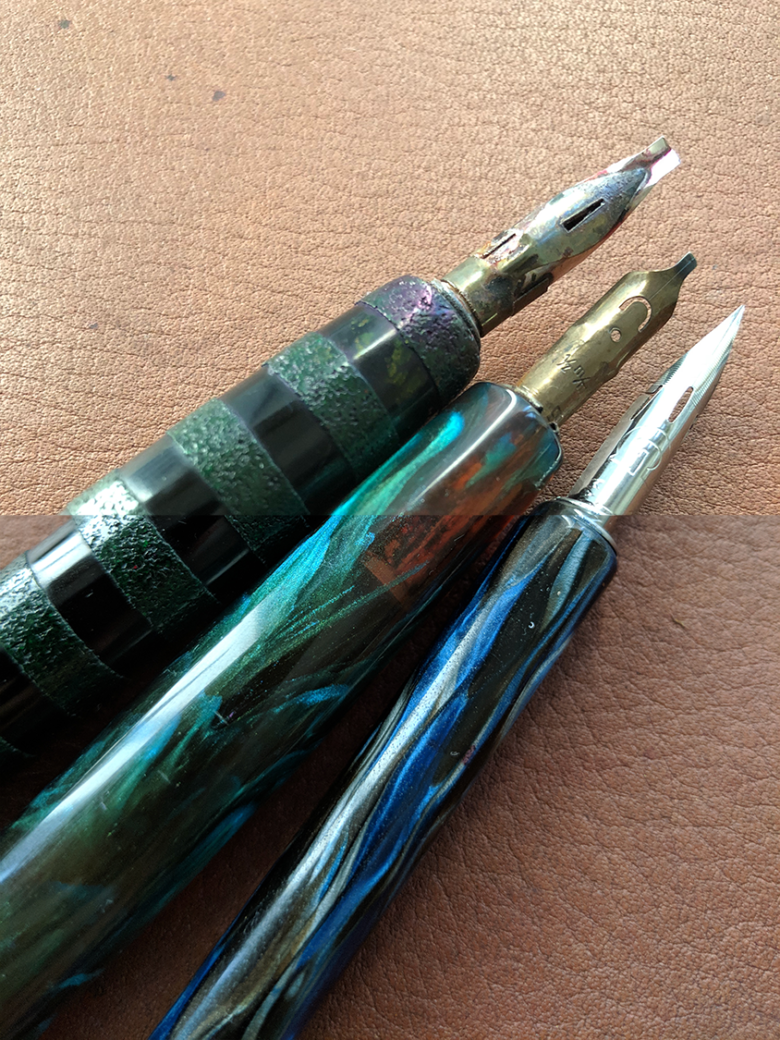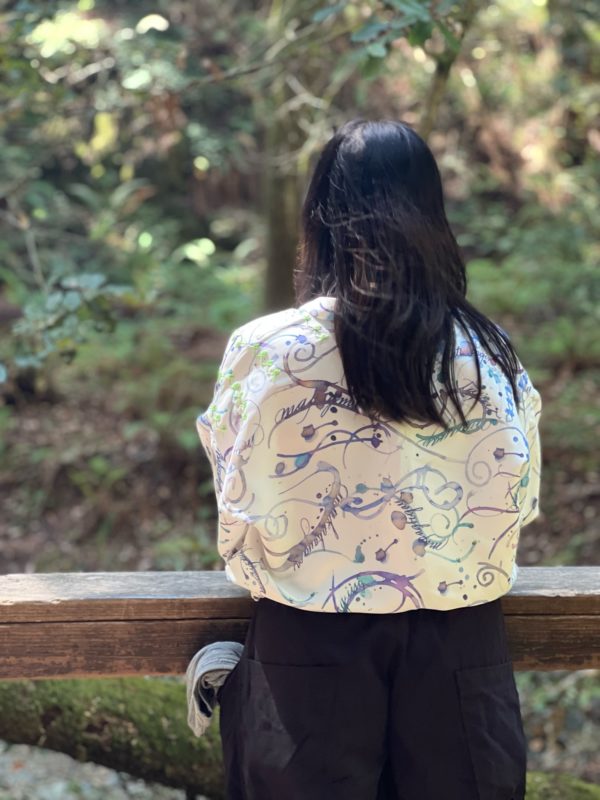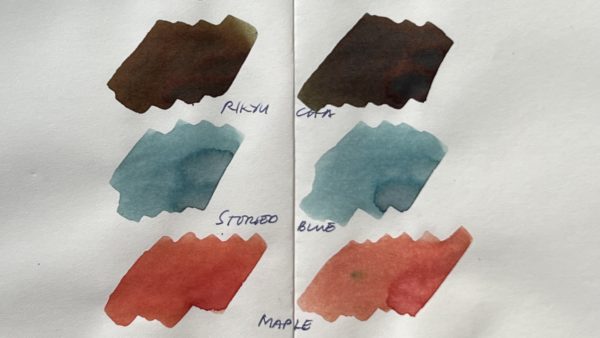With a ton of comparison reviews out there, and new iPhone and Pixel models coming out later in the year (notches for the holidays!), why this one?
Most phone camera shootouts feature landscapes, portraits, and some kind of petal-power macro. Pen people want to know if the phone will take great pictures of nibs, ink sloshing in demonstrators, and distressed leather and waxed canvas journals artfully angled beside hand-thrown ceramic mugs and patinated brass desk accessories, dressed with a sprig of mint.
Pen people want to know if pen materials register well – the halfway-matte of vintage ebonite, high polish on turned acrylic, the depth of celluloid. Pen people might not have a studio set-up with full spectrum light, but work with messy desks and sideways light from a window. Sometimes clouds cover the sun. Being able to zoom in matters: the engraving on a cap band, the shape of a feed.
Color temperature changes because the earth is not flat. Where I live, equatorial, it might as well be; sunlight descends straightforward and strong. No one living anywhere near the equator designed the Pixel 2 XL’s software. It seems to overcompensate for saturated tropical warmth by rendering everything it sees cooler, compared to the iPhone X. In contrast, the iPhone X brightens everything it captures, as if every color’s fresh off a summer vacation. The bag is really a light grey, but the iPhone X wants it to be cheerful off-white.
I used no scientific method, only a squint. I resized the images but nothing more. They are as captured.
The phones handle portrait mode differently. The iPhone X essentially uses dual cameras, the Pixel 2 and Pixel 2 XL manage with a single lens, with the heavy lifting done by the dynamic duo of “machine learning and computational photography techniques.” In practical terms, this means a better chance of blurred backgrounds and sharp subjects with the Pixel 2 XL. Even in uncertain light, the Pixel 2 XL can find the subject and mask it. The iPhone X needs more light.
When shooting up close without aid of lens attachments, the Pixel 2 XL has a slight edge. Getting close enough to capture detail without blocking off too much light is a matter of how you angle the subject and how you hold the phone. Still, because of its tendency to make images brighter, the iPhone X can overexpose highlights, and details blur, albeit pleasantly.
I took these nib shots with the Moment macro lens attachment. Again, the iPhone X brightens the image on its own, but the Pixel 2 XL preserves details even in the darker areas.
Eyes feast on color and texture in both images below. Yet the grey struggle is real. The reality lies somewhere in between. The Pixel 2 XL’s grey is closer, still not as nuanced as the real thing. This could be a matter of bland outdoor light.
I cleared the daily mess off part of the desk to take this shot. Weak light from the window, sad late afternoon office ambience, merely tapped on the screen to focus. Neither of these would escape unedited, in the normal course of things. I dislike both – the iPhone X rendered the paper almost yellow, the Pixel 2 XL killed the creaminess.
Colorful pens against even more colorful backgrounds posed a challenge to both cameras. I think the iPhone X fared better than the Pixel 2 XL here.
Pen people love sharing their latest ink discoveries – usually with a YMMV, because the journey from what we see to what others see is fraught with uncalibrated screens and undead fluorescent overhead lighting. Inevitably, I resort to Snapseed and correct white balance – nothing looks right, otherwise. And neither the iPhone X nor the Pixel 2 XL gets these inks right.
So which takes better pictures for pen people (and maybe even OF pen people)? Given well-placed, ample light and steady hands, both iPhone X and Pixel 2 XL deliver best-in-class mobile photography, capturing details and pleasing color at medium to close range. The iPhone X lives up to its reputation of getting technology out of the way and just letting creators create. If the need is to shoot and share immediately, go with the iPhone X. Images taken with it will be assuredly brighter, and will look good even on low-powered, lower-end smartphone screens. If the intent is to capture as much as possible now, edit later – then either, with a slight bias towards the Pixel 2 XL when there’s less light. For editing, I can’t recommend Snapseed enough, and it’s free on both iOS and Android.
There are many, many other more reasonable reasons to choose one over the other, and I’m certain not too many of those have anything to do with fountain pen photography. If you’re looking for those reasonable reasons, this review might not be for you. 😉



